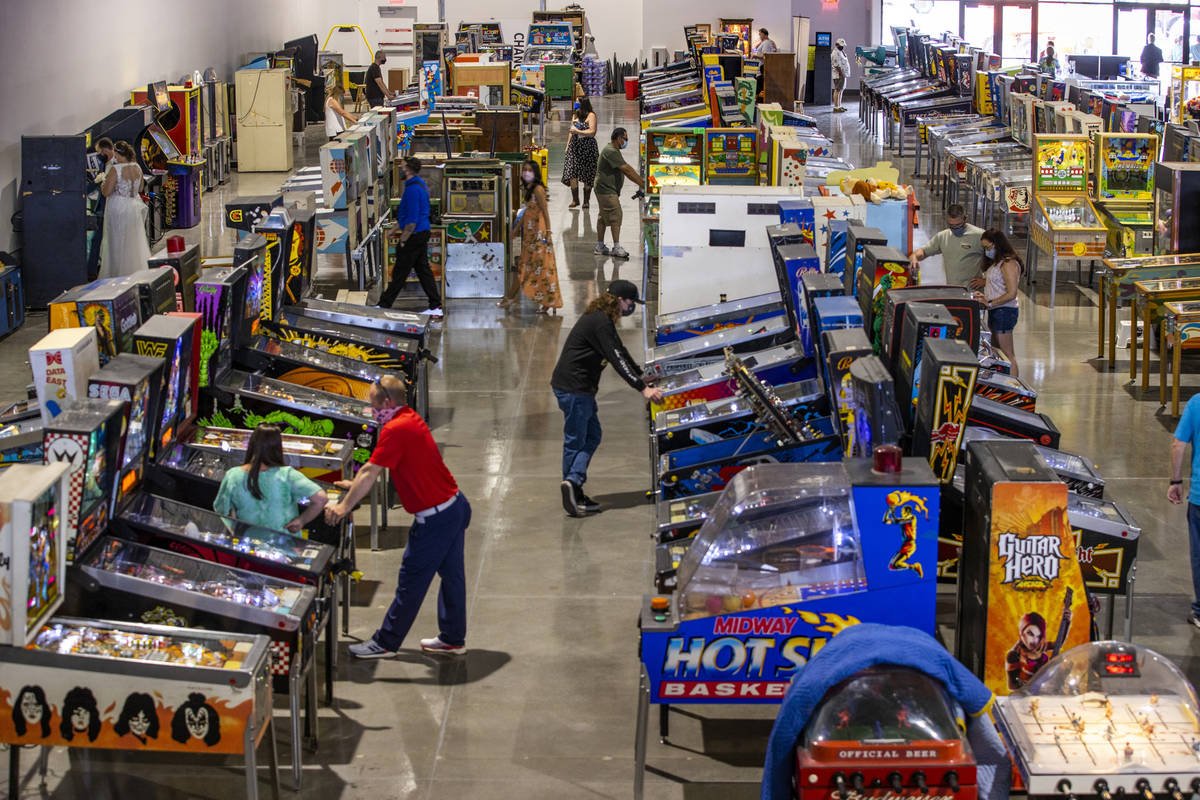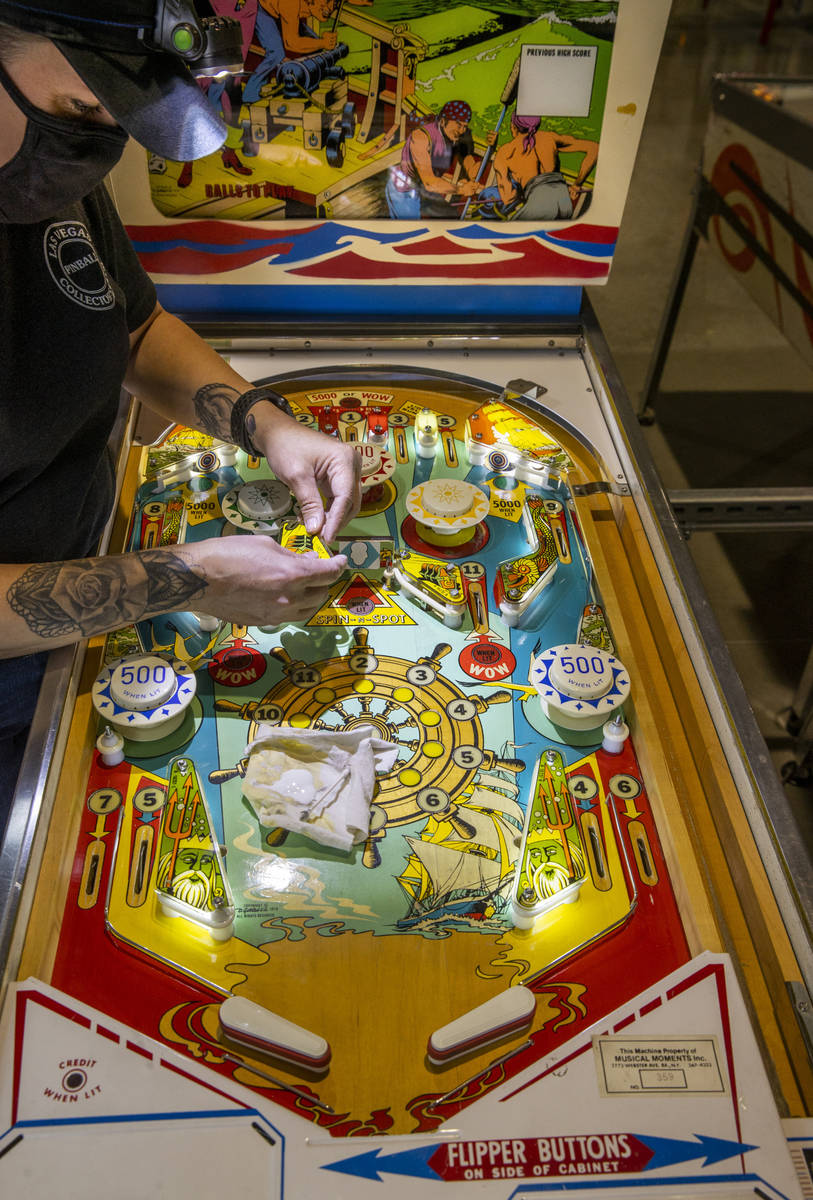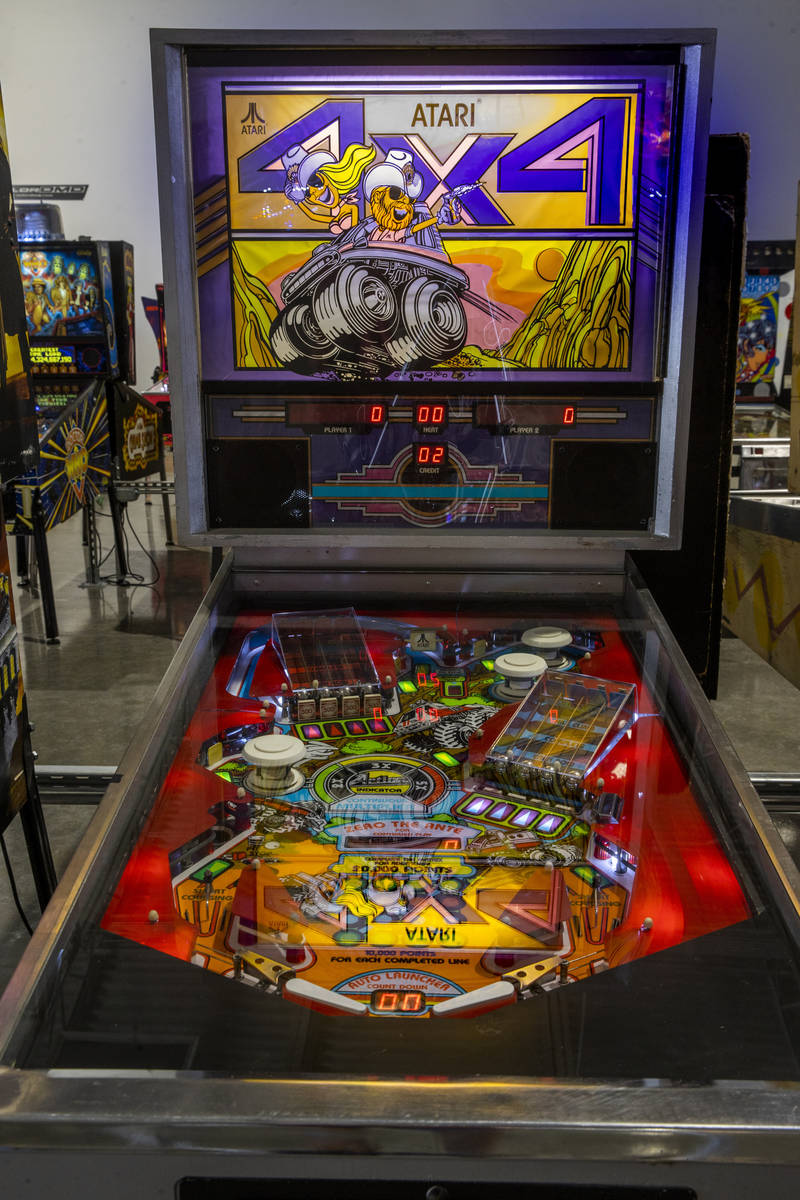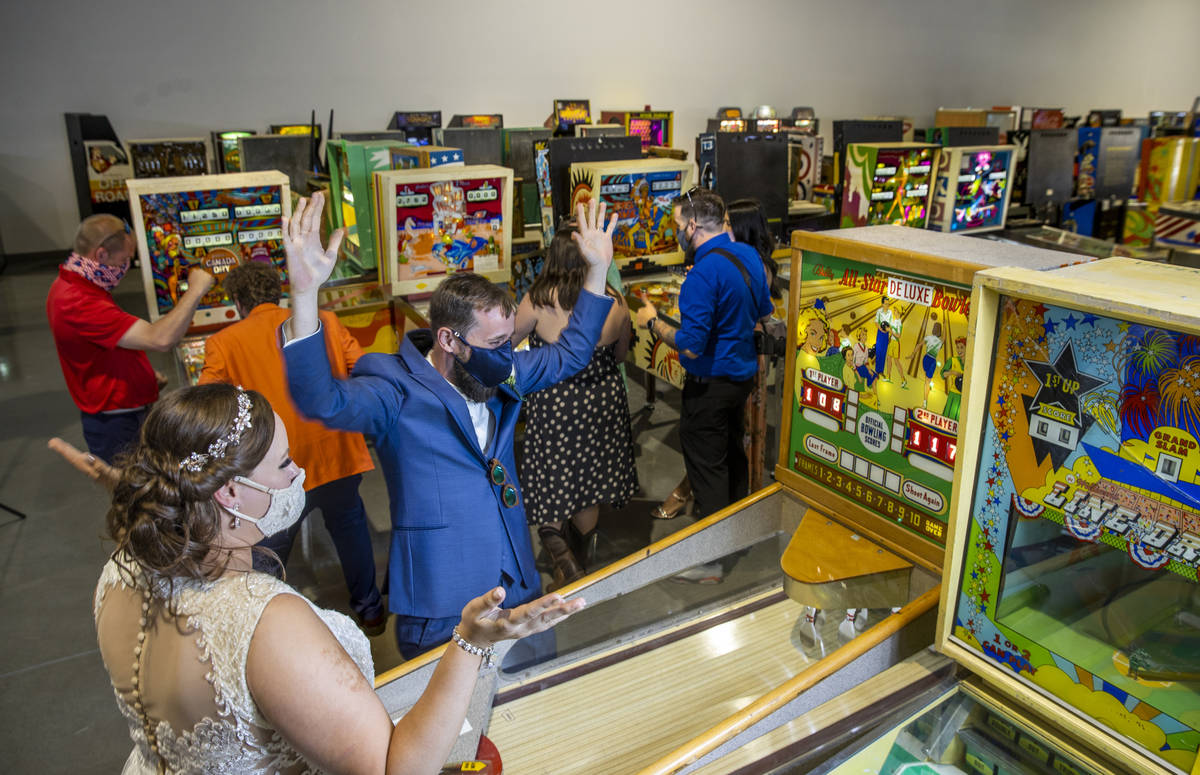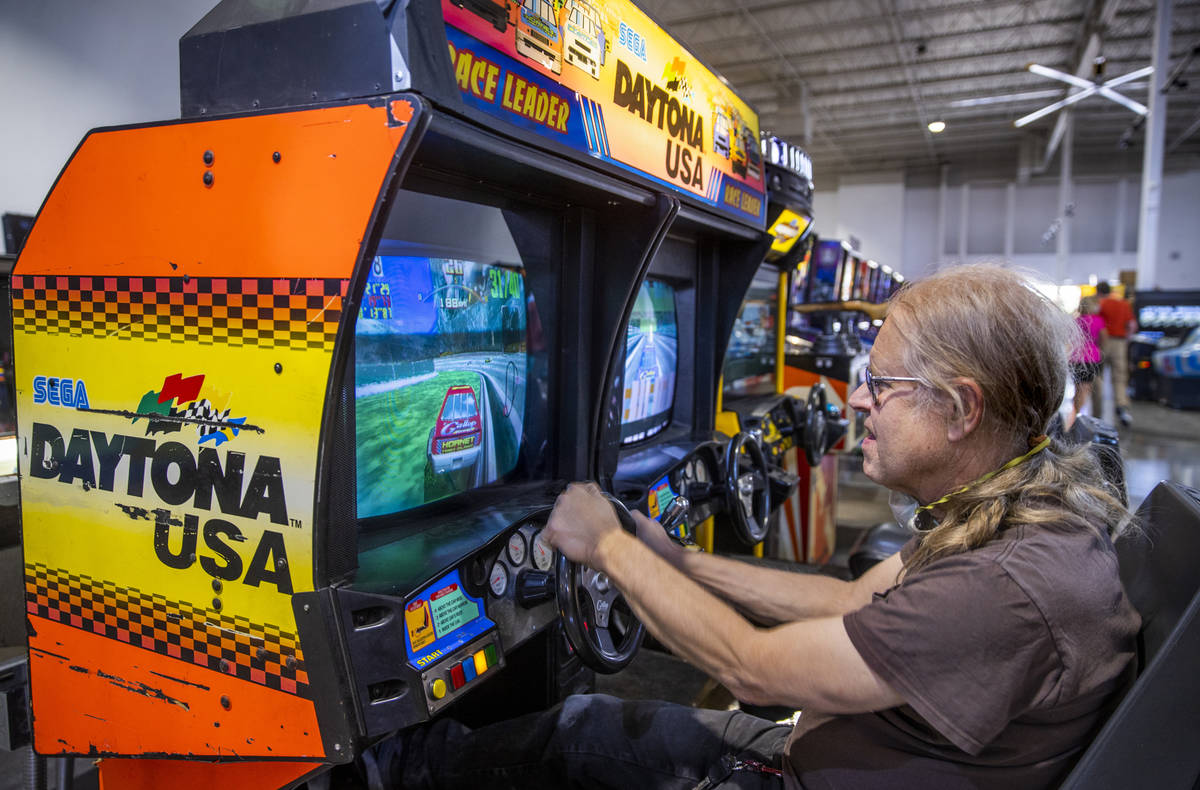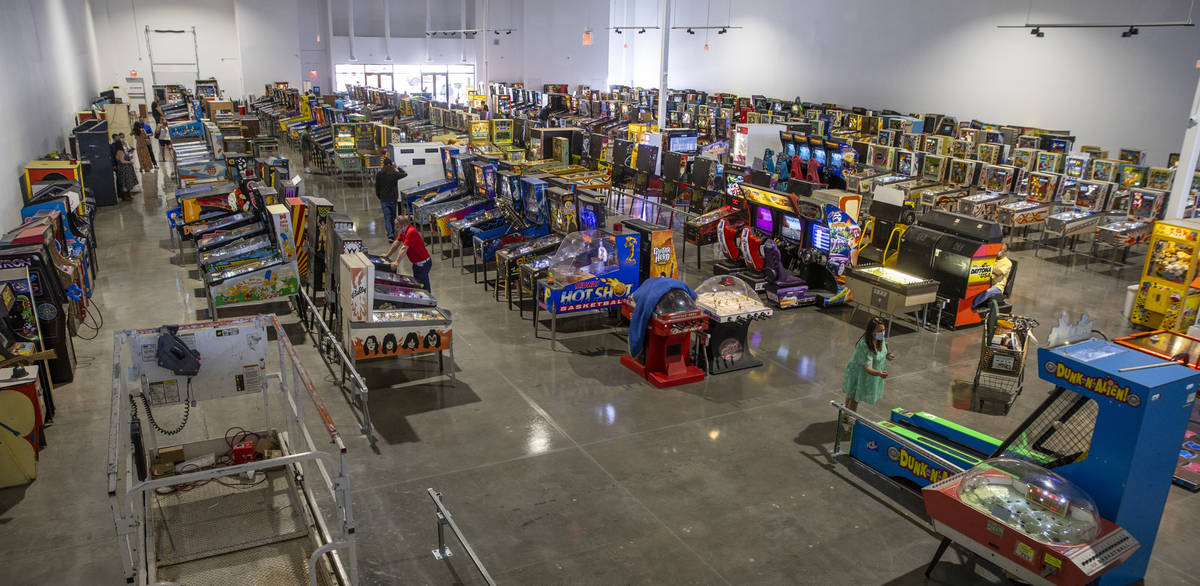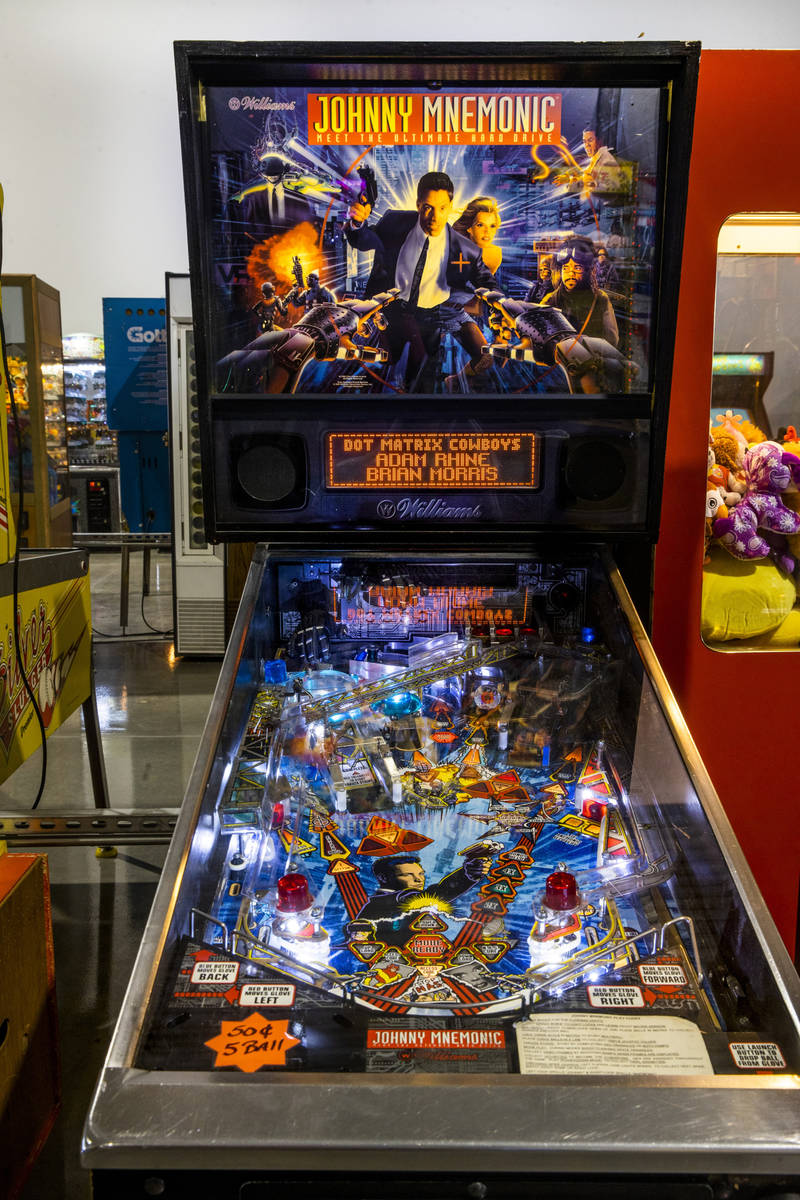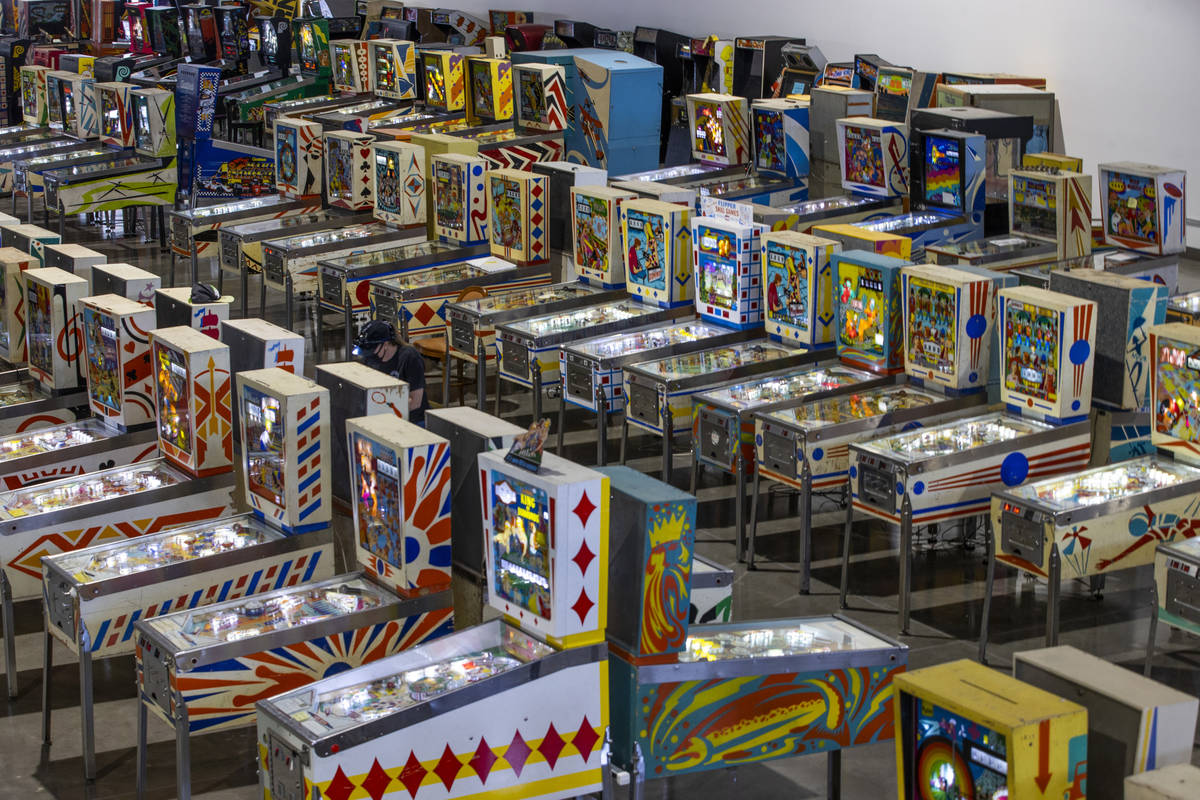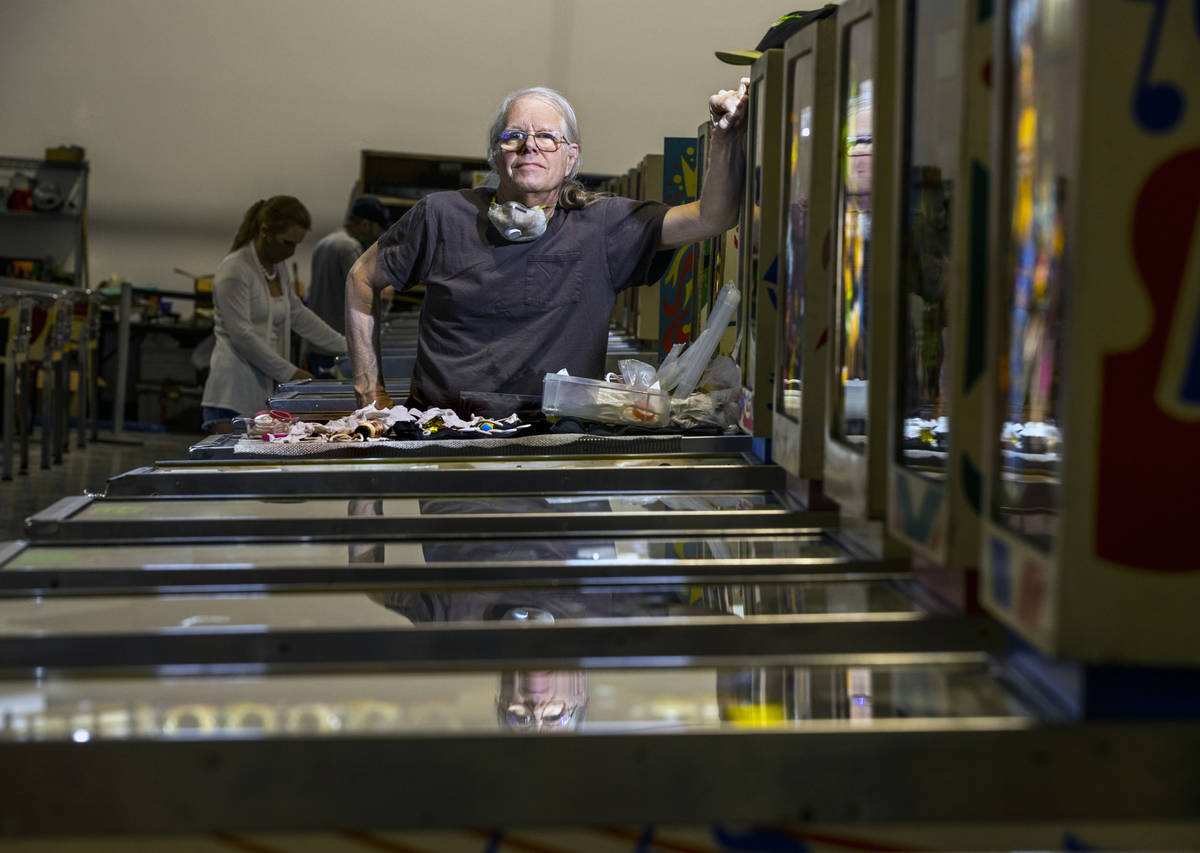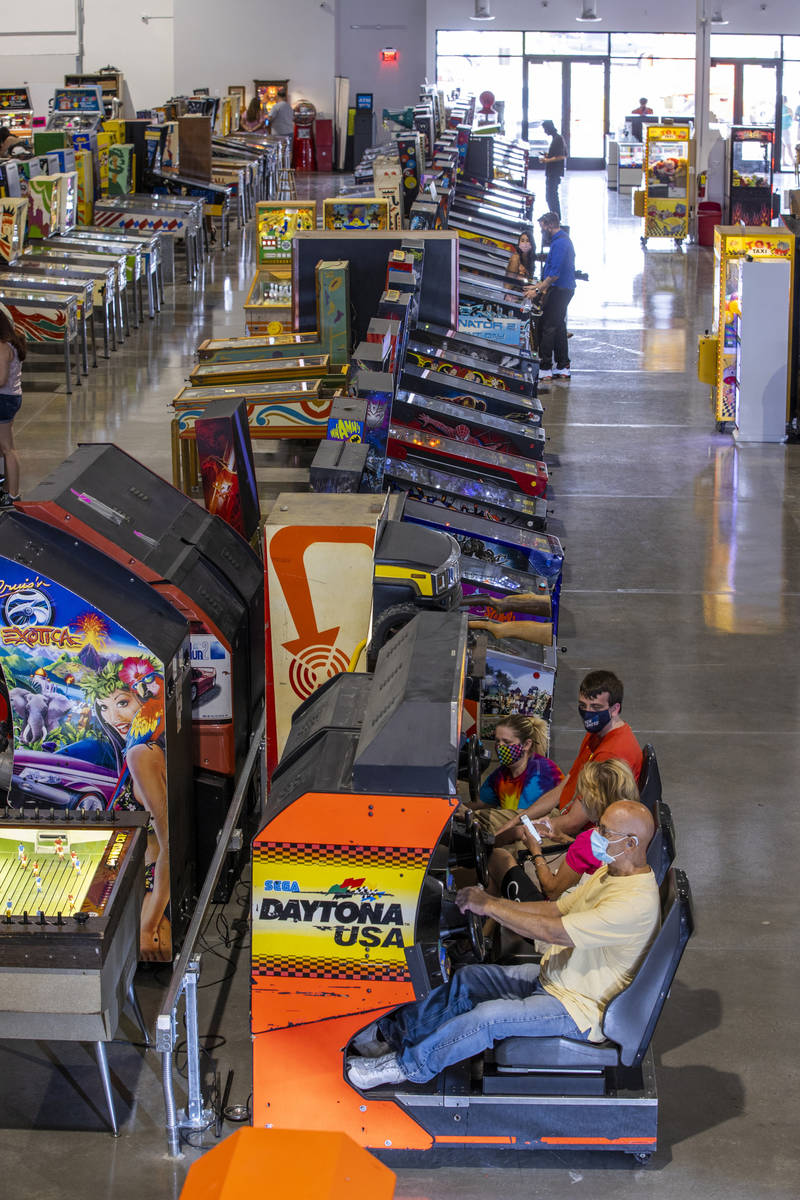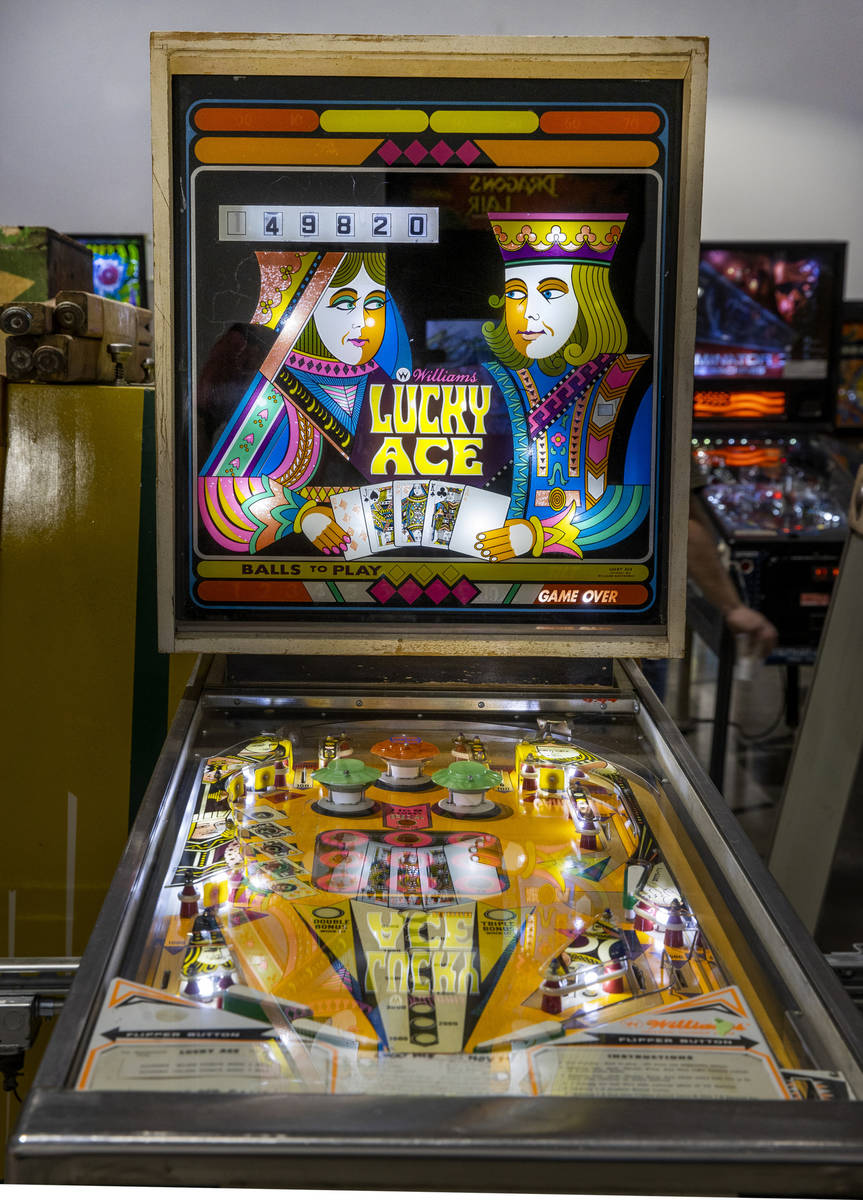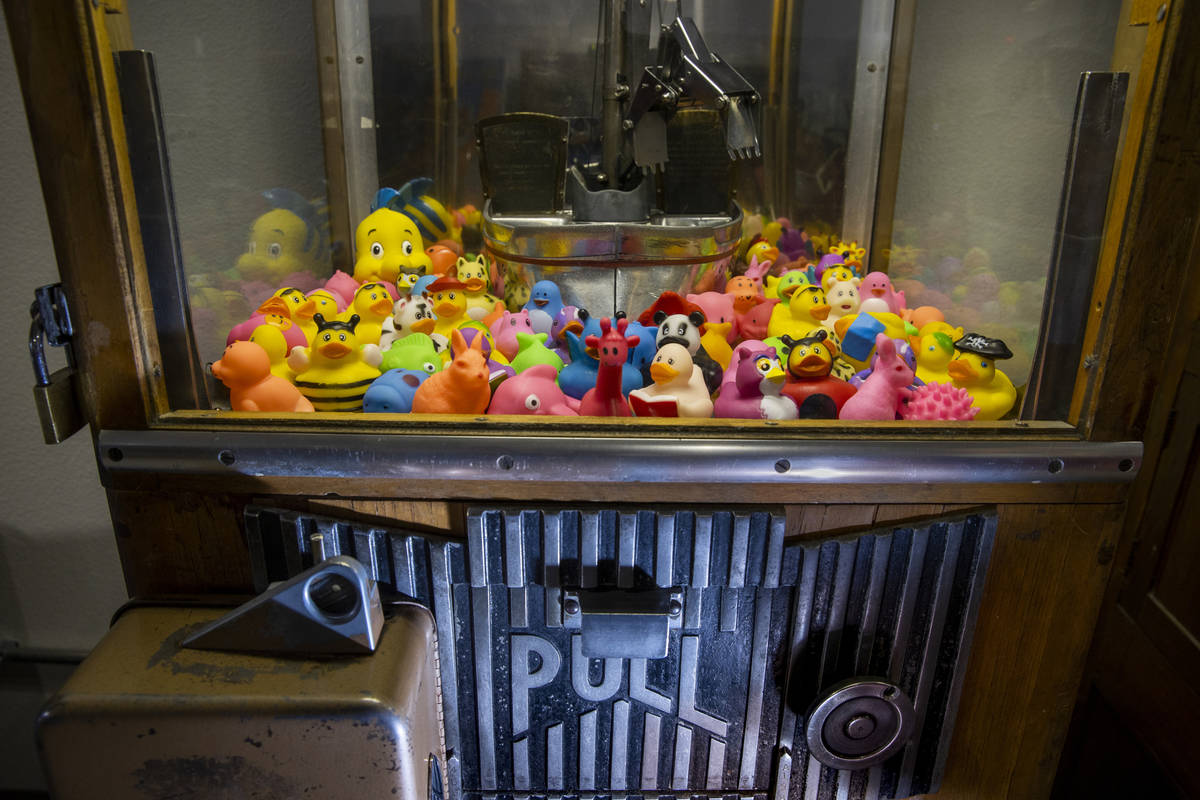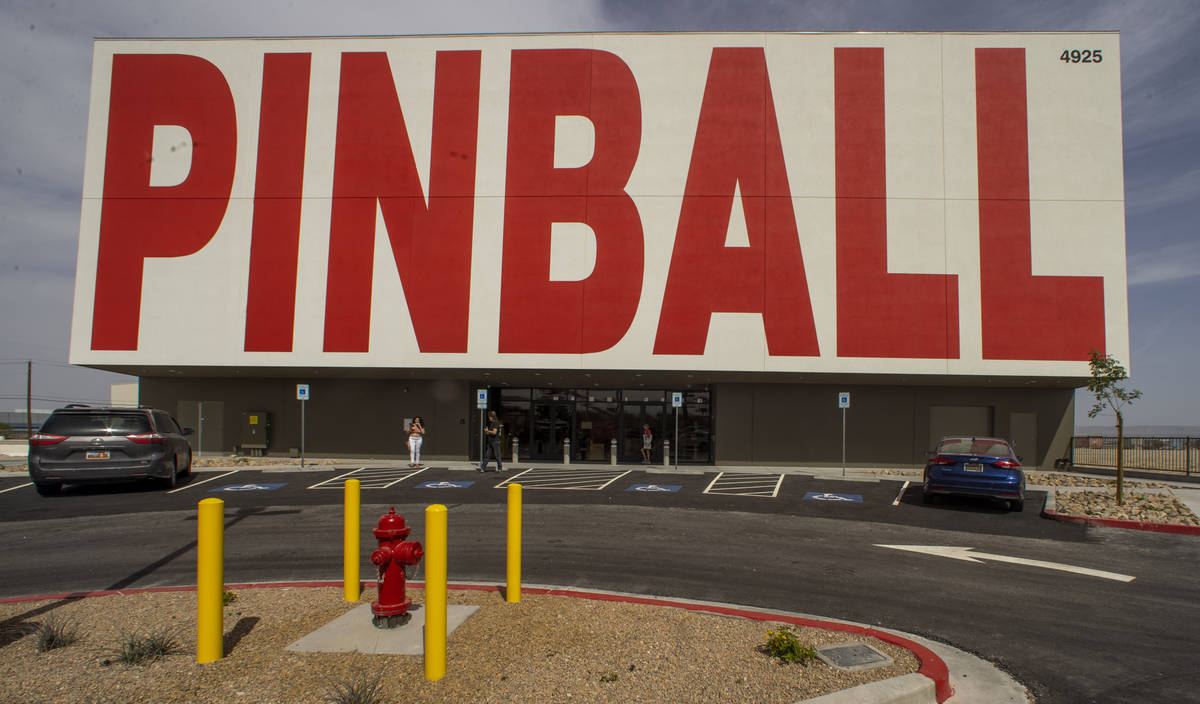Pinball Hall of Fame opens in deluxe new digs
It feels like an airplane hangar of memories.
The voluminous, white-walled room isn’t even half full yet, and already it’s loaded with remembrance.
Stroll through — you’ll see it, absorb it — get wormholed back to Chuck E. Cheese or that neighborhood bowling alley, wherever you first started feeding your allowance into Ms. Pac-Man or whatever quarter-gobbler it was that sucked the change from your pockets back in the day.
And then you just might freeze in your tracks.
That happens sometimes at the Pinball Hall of Fame.
“We have what we call ‘nostalgia lockup,’ ” explains owner Tim Arnold, his wispy gray hair much longer than his patience for such modern distractions as cellphones, which he refuses to own. “People will walk down a row of games and they’ll just stop dead.
“In your mind, everything that’s ever amused you is in there somewhere,” he observes, “but you’ve forgotten about it … until you see that machine.”
For 15 years, the Pinball Hall of Fame has been a portal to the past for tens of thousands of visitors annually, a maze of machines that take your money and give you something ephemeral and lasting at once: a good time in the moment that simultaneously conjures the glow of good times had in years gone by.
A nonprofit organization, the hall also has donated millions to local charities.
After opening his first location in a run-down strip mall next to a discount movie theater on Tropicana Avenue in 2006, Arnold moved down the street to a larger spot three years later. Now he has just opened the doors on a massive, new $10 million complex across from the “Welcome to Fabulous Las Vegas” sign on Las Vegas Boulevard.
It’s taken Arnold, wife Charlotte and a cast of volunteers decades to get here.
And now they and their fellow “pinheads” of the world have their palace, built 25 cents at a time.
“Financially, we shouldn’t have done this,” Arnold says, taking in his new digs. “We should have just stayed on Trop and rotated games in and out and let people have a different show every time by doing it that way. But our ego — and the fact that we really wanted to see something spectacular — kind of took over.”
It began in a garage
Like so many dreams, this one started with a few gumball machines in Michigan back in 1969.
Midwest native Tim Arnold was 14 when he invested in those candy dispensers as his first moneymaking venture.
Three years later came the pinball machines.
He bought his first one with brother Tom and a family friend, Mike Reynolds, for $150 in 1972.
They put it in their parents’ garage, and before long, all the neighbor kids were stopping by to play.
The brothers made enough money that they soon were adding more games in laundromats, pizza parlors and frat houses.
While still in high school, Arnold had 12 machines in one of the first Domino’s Pizza shops in the country.
Walking through his new facilities on a Thursday morning, he spots a “Twin Rifle” shooting game.
“I had one of these in a pizza parlor, and I made more money than my friends did on their whole paper route,” he says. “Then, when you got old enough to get a job, they wanted to get a job at the car dealer washing cars or at McDonald’s. I went out and bought a van, so I could deliver these to more pizza parlors and frat houses.”
In 1977, Tim and Tom Arnold, their younger brother Ted and Reynolds opened their first arcade, Pinball Pete’s, which would eventually expand to seven locations throughout their native Michigan.
Arnold spent a few years in community college pursuing a career in television or radio before jettisoning his studies.
“I was making more money working part time hustling pinball than I would if I had got my degree and got a job,” he explains. “I figured out that I could do this, and it’s like being in show business if you do it right. I did real well with it.”
Well enough to retire in 1990 at 35.
He packed up 1,000 games and headed west.
Both Las Vegas and the Pinball Hall of Fame loomed on the horizon.
The show must go on
He likens his business approach to that of a cable TV pioneer aptly nicknamed “Captain Outrageous,” a fellow square peg fond of thumbing his nose at square sensibilities.
Related: Getting the ball rolling on Pinball Hall of Fame
“My idea was to mimic Ted Turner,” Arnold says of the founder of Turner Classic Movies, among other channels and networks that he mentions during an hourlong conversation. “When he bought his first batch of movies, everybody said, ‘You’re a (expletive) idiot. I can’t even give those things away on the late, late show.’ ”
But Turner took all those scratchy, faded film prints and issued crisp-looking new ones.
He added a host at the beginning and end of each movie.
He created a show.
“All of a sudden he’s a genius,” Arnold says, “because he saw that what was needed was something that people remember and a guy who can put on a show.”
Arnold loves that word: show.
He says it with relish, often.
That’s what he’s trying to do here.
In his mind, he’s keeping Vegas, Vegas.
“This is a company town, and the company is entertainment,” he explains. “People come here for the shows, they come here for concerts, and now they’re going to come here for this because this is the only place it exists.
“What happened to the fun?” he wonders. “What happened to the show?”
These are rhetorical questions, of course.
He poses them inside a room intended to embody the answers.
The $10 million question
So how does the Pinball Hall of Fame go from its original incarnation as a man-cave-sized room with all the frills and elbow room of a crowded drunk tank to a 26,000-square-foot behemoth on the Strip?
Foremost, a low overhead is crucial to support these high ceilings: The staff is all volunteers. Arnold fixes and maintains almost everything himself — even makes many of his own parts — and has a knack for acquiring games for pennies on the dollar.
When a certain type of game goes out of style, for instance, he swoops in.
Related: Even Bill Gates ‘couldn’t get any of this stuff’
“Right when stuff is a bust, I start analyzing which were the better ones to get: which version of ‘Dance Dance Revolution,’ which one of the bicycle games,” he says. “I go out and find a nice specimen and buy it when it’s unappreciated and cheap.”
Walking through his new place, Arnold points out four Skee-Ball machines that he scored when the Riviera closed — (“They were 50 bucks a piece. What am I going to say, no?”) — two Operation crane games that he got for $100 when a GameWorks went out of business; the 14 coin machines he bought for the price of one when GE Capital seized the property of an arcade chain that didn’t pay its bills.
“If you’re thrifty and you have a lot of quarters, they do add up,” he says. “We’ve been very frugal.”
Some shrewd financial maneuvering has helped as well.
The Arnolds sold their previous building on Tropicana Avenue for cash up front, then leased the space back until leaving in early April, netting them $3 million.
When they first sought to purchase the property at their current spot, the owner passed on their offer. The land then went to auction to the Arnolds’ great benefit: They bid and got it for $1 million less.
Nevertheless, when the COVID-19 pandemic hit, it devastated the Pinball Hall of Fame’s revenue streams. Subsequently, a GoFundMe campaign was launched to secure the remaining $200,000 needed for its relocation, which was supposed to happen in November or December.
Local YouTuber Steven Campbell, host of the “NOT Leaving Las Vegas” channel, became aware of the campaign and came to the rescue. He filmed a video documenting the Hall of Fame’s plight, pushed it out on various social media channels and found a wealthy, anonymous donor with ties to the pinball industry who cut a check for the final $79,000.
“I told Tim I had a check,” Campbell recalls. “He didn’t know how much it was for. Then I went down and presented it to him and blew them all away. Everybody was crying. It felt really good.”
The move was on.
Digging in to the new digs
“Welcome to crisis central,” Arnold says of his new place, his humor as dry as the weather in his adopted hometown. “It’s going to be about the finest museum/arcade facility anywhere.”
Arnold and crew are loading games into the building before its opening, with plans to have about 300 machines at first before eventually featuring about 700 games.
Though the Hall of Fame is $1.7 million in debt, according to Arnold, once that debt is paid off and they have a small cushion, they’ll be able to ramp up their charitable contributions again.
“We’re hoping that we could deliver $1 million to $2 million a year coming up in the near future to help the Salvation Army, the women’s shelter, St. Jude’s Ranch, you name it,” he says. “There’s a million people who could use help. That’s what we’re going to do.”
In the meantime, the Hall of Fame is slowly stirring to beeping, blinking, clattering life in its new location.
In an era where movies and music have gone digital, where many entertainment options exist in the ether, Arnold’s all about providing some tactile, hands-on fun.
His aim is as simple as the appeal of hitting a silver ball with a pair of flippers: to give old memories new life.
“If you remember a record from your youth, you can go on the internet and get it — if there’s one copy, everybody has it,” he says. “If it’s an old movie, they’re all on TV, they’re all streaming, you can get them.
“This stuff only exists in the real world,” he notes, surveying his collection. “Time Warner will never compress this and send it down a pipe. It only exists here.”
Contact Jason Bracelin at jbracelin@reviewjournal.com or 702-383-0476. Follow @JasonBracelin on Twitter and @jbracelin76 on Instagram




